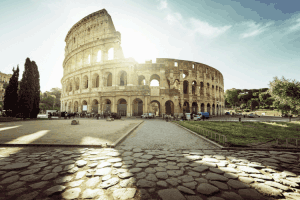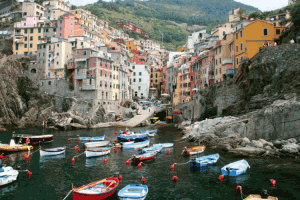Italy, often known as the “Eternal City,” invites travelers with its diverse allure and wealth of historical and cultural marvels. Its Mediterranean appeal is enhanced by a mix of ancient remnants, Renaissance architectural wonders, and picturesque scenery encompassing coastlines, lakes, countryside, and mountains.
Tourism substantially contributes to the nation’s financial inflow, fostering economic expansion, creating jobs, and sustaining various sectors such as hospitality, transportation, and local enterprises. Furthermore, it promotes cross-cultural interactions, enriching global comprehension and solidifying Italy’s position as a prominent global tourist destination. It’s time to learn how to apply for an Italy visa and explore this magnificent country.
Types of Italian Schengen Visas
Here is a list of various types of Italy visas:
Schengen Short-Stay Visa (C-type)
Italian Airport Transit Visa:
This visa allows individuals transiting through Italian airports to reach a non-Schengen destination.
Italian Tourist/Visitor Visa:
It is Intended for those visiting Italy for holidays, sightseeing, or visiting friends or family.
Italian Business Visa:
It is issued for business-related activities like meetings, deals, or training in Italy.
Italian Visa for Official Visit:
It is exclusively for members of official delegations invited for meetings, consultations, or exchange programs in Italy.
Italy Work Visa
The Italy work visa allows non-EU individuals to work in Italy. It requires a job offer, a valid employment contract, and employer sponsorship, making it essential for legal employment within the country.
Italian Medical Visa:
It is designed for individuals seeking medical treatment in Italy.
Italian Study Visa:
It is for students intending to attend courses in educational institutions in Italy for up to three months. The study in Italy visa process requires students to submit a valid passport, proof of enrollment in an Italian institution, financial statements showing sufficient funds, and health insurance.
Italian Visa for Cultural, Sports, and Film Crews:
It is for those participating in cultural, sports, or film-related activities in Italy.
Additional Requirements Based on Employment Status:
Depending on visitor’s employment status (employed, self-employed, student, retired, unemployed, or dependent), additional documents such as employment letters, bank statements, tax documents, or enrollment proof may be required. Also, understand Schengen visa regulations and rules for employed and non-employed person to complete the application without hassle.
Italian Visa Requirements for Minors:
Parents applying for minors short-stay Italian visa, must provide birth certificates, parental authorization letters, and related identification documents.

Italy Transit Visa Requirements:
An Italy Transit Visa is required for seafarers disembarking at Italian harbors to board another vessel to a non-Schengen destination. Requirements include a valid visa for the final country, flight or vessel tickets for the onward journey, an original and photocopy of Seaman’s book, an employment contract, and a medical fitness certificate if applicable.
For individuals traveling through Italian airports, the Italian Airport Transit Visa allows for transit to a non-Schengen destination. Tourists or visitors to Italy can apply for the Italian Tourist/Visitor Visa for holiday purposes. Business travelers seeking to engage in meetings, deals, or training should opt for the Italian Business Visa.
For specific purposes, there are dedicated Italian visas: official visit visa, medical visa, study visa for short courses, and visa for cultural, sports, and film crews. Applicant’s employment status dictates additional requirements like employment letters, bank statements, and tax documents. Minors or their parents applying must submit essential documents like birth certificates and parental authorization letters.
Documents Required
Italian visa applications mandate specific documents based on the travel purpose, differing for business and tourist visas. Requirements may vary by country, and additional documents can be requested by Italian authorities.
The essential requirements for an Italy visa include:
- Italian Visa Application Form: Complete and submit the official Italian visa application form.
- Valid Passport or Travel Document: Provide a valid passport or travel document.
- Pictures: Include recent passport-sized photographs but make sure you know the Italy visa photo requirements.
- Civil Status Documents: Furnish documents like marriage certificates, birth certificates of children, or a spouse’s death certificate (if applicable).
- Copies of Previous Visas: If applicable, submit copies of previous visas.
- Travel Insurance: Obtain travel insurance covering the entire Schengen area.
- Proof of Travel: Present proof of round-trip tickets, reservations, or flight itineraries.
- Proof of Accommodation: Provide evidence of your accommodation arrangements in Italy.
- Proof of Sufficient Financial Means: Demonstrate adequate funds to cover your expenses during the stay, as per the prescribed amounts based on the length of your visit.
- Cover Letter: Include a letter explaining the purpose of your visit, the intended duration of stay, and other relevant trip details.
- Documents Based on Employment Status: Depending on your employment status (e.g., employed, self-employed, or student), provide additional documents such as employment letters, payslips, business licenses, or enrollment proof.
- Visa Fees: Pay the required visa fees as per the guidelines.
- Additional Documents for Minors: Include birth certificates, parental authorization letters, and copies of parents’ identification for minor applicants.
- Additional Documents Based on the Purpose of Entry: Tailor the submission based on your purpose of visit, providing other documents accordingly.
Application Process for an Italian Visa
Being part of the Schengen Area, Italy allows travelers to visit multiple European countries with a single visa. The Schengen Visa for Italy is the key to exploring this beautiful Mediterranean nation and other Schengen countries. Here’s a step-by-step Italy Transit Visa guide to help you navigate the application process:
Step 1: Determine the Type of Visa Needed
Determine the reason for your trip (e.g., tourism, business, medical purposes, etc.) and select the relevant Schengen Visa accordingly.
Step 2: Gather the Required Documents
Get all the essential documents for your visa application, like the application form, passport, photos, travel plans, accommodation information, financial proof, and more.
Step 3: Mail at info@italyvisa.ae
Send all your documents to info@italyvisa.ae for further processing. www.italyvisa.ae is your one-stop solution for hassle-free delivery of Italy visas. It’s convenient and simple.
Step 4: Schedule an Appointment
Book an appointment for your visa application submission. Some countries allow walk-ins, while others require prior appointments.
Step 5: Complete the Application Form
Fill out the Italian Schengen Visa application form accurately and truthfully. Make sure all details provided match the information in your supporting documents.
Step 6: Pay the Visa Fee
Pay the required visa fee based on your age, nationality, and the type of visa you’re applying for. Keep the payment receipt as proof.
Step 7: Attend the Visa Interview or Submission
Visit the designated Italian embassy, consulate, or visa application center for your appointment. Submit the application form and all supporting documents. Your biometric data (fingerprints and photo) might be taken at this stage.
Step 8: Await Processing
Visa processing takes up to 15 days, but times may vary based on nationality. Embassies may seek extra details if necessary.
Step 9: Collect the Visa
Once your visa is approved, go back to the embassy, consulate, or visa application center to collect your passport with the visa affixed.
Step 10: Review the Visa Details
Check all the details on the visa to ensure accuracy. Verify the validity dates, the number of entries allowed, and any specific conditions.
Conclusion
This comprehensive guide sheds light on the diverse types of Italian Schengen visas available, and their specific requirements. Whether for transit through Italian airports, leisurely exploration, business engagements, medical treatment, study purposes, or participation in cultural and sports activities, Italy offers tailored visas to suit various travel needs.
Additionally, it emphasizes the importance of considering one’s employment status and the associated additional requirements, recognizing the nuances for minors applying for visas. With a clear outline of the necessary documents and a step-by-step application process, this guide empowers individuals to efficiently navigate the intricacies of obtaining an Italian visa, facilitating a seamless and enjoyable journey to this captivating Mediterranean destination.






